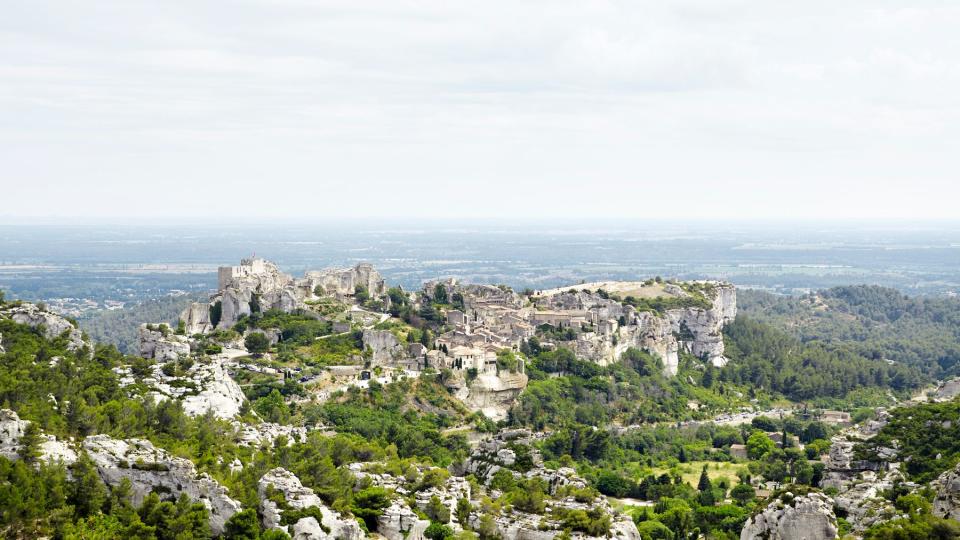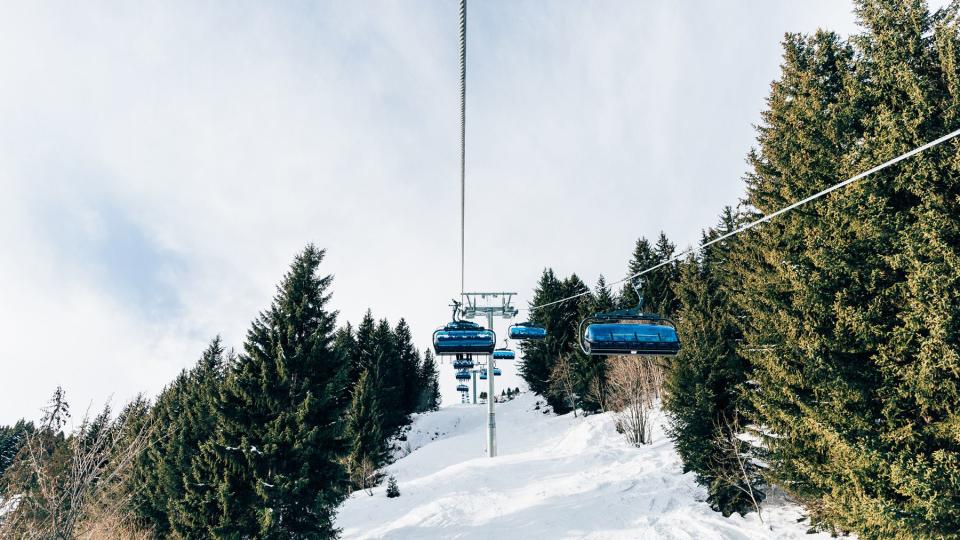7 Destinations in France Where the French Love to Go

Sergio Formoso/Getty Images
The French know how to get around. Visit Greece, Italy, or Israel in August — when they generally vacation for the entire month — and you're bound to hear your fair share of "bonjours" and "au revoirs." This year, of course, was a bit different. The pandemic grounded planes and enforced complicated quarantines, so locals were encouraged to stay closer to home with the "Cet été, je visite la France" (This summer, I visit France) campaign.
Generally, the French reserve domestic travel for school breaks or les ponts, when a national holiday falls at the end or beginning of a week, allowing locals to "make a bridge" with an extended weekend. Where locals go depends on a variety of factors such as season, distance, and cost, but whether they head for the snow-capped mountains, the vineyard-dappled countryside, or the rocky coasts, one thing is for sure: It will be beautiful. France's varied terrain is nothing short of spectacular, and I've had the great fortune of picking my jaw off the ground a variety of times since moving to Paris nearly six years ago. While I spent the first few years visiting some of the major cities such as Strasbourg, Bordeaux, and Lyon, I slowly started venturing further afield to the small towns rarely mentioned in guidebooks. The following destinations, vetted by a few French locals, include spots worthy of a short break or longer.
?le de Ré
Located off the west coast, south of Normandy, this 32-square-mile island on the Atlantic is known for its salt marshes, oyster beds, and bike paths, which are the ideal way to get around. It's reachable by train from La Rochelle (three hours from Paris) and about a 40-minute bus or car ride from there. There are a number of small villages on ?le de Ré, each with their own atmosphere, beaches, seasonal markets, and seafood restaurants — all best discovered by two wheels through vineyards and the occasional field of donkeys. The most plentiful is Saint-Martin-de-Ré, which is a certified UNESCO World Heritage site featuring an ancient citadel and colorful harbor where the docked boats sometimes end up moored depending on the tide. The island has a small smattering of quaint hotels and bed-and-breakfasts, but this is the type of place to settle into a house rental for barbecuing in the yard and feasting on oysters farmed down the road.
Ardèche
The French love their chestnuts. In fact, if you've been invited to Christmas at someone's home, the ideal gift to bring is les marrons glacés or candied chestnuts. The round, prickly cased fruit is generally harvested in the fall, and the southeast area of Ardèche produces 5,000 tons per year. It's also famous for its national park, Monts d'Ardèche, where half-day loop hikes from the tiny town of Laviolle, past the ruins of a centuries-old farm and through the Volane Valley, make for the perfect autumnal activity. In the summer, its southern gorge, complete with a natural bridge spanning the river, hosts all the action, from kayakers and canoers to hikers and swimmers. The entry point village of Vogüé boasts all that you'd expect from a town nestled into the limestone cliffs of a medieval castle: cobblestoned streets, ochre roofs, and facades dripping with ivy.
?les d'Hyères
There's way more to the French Riviera than Cannes and Antibes, and when the French crave that crystal clear azure sea, some hop on a boat for one of the Hyères Islands located offshore between Toulon and Saint-Tropez. Upon disembarking the ferry and breathing in that salty sea air and scent of cedar, you'll know you've come to the right place. The island of Port-Cros is favored by nature lovers and hiking enthusiasts for its wild terrain, while Porquerolles attracts sunbathers and snorkelers to its five soft-sand beaches. (Both are traversable only by foot or bike.) Of course, they're mobbed in the summer, but the season begins in May and winds down in late October, so there's ample opportunity to enjoy the olive groves and vineyards without the crowds. While there are small hotels on both islands, as well as a growing number of captains who offer their boats as hospitality havens (while docked), Hyères town on the mainland offers more options, making day trips super-easy.

James O'Neil/Getty Images
Les Alpilles and Le Luberon
When it comes to the northern area of Provence, the French love both sides of the Durance River for its two national parks with dry valleys and arid limestone ranges: les Alpilles on the west and le Luberon on the east. Dotted around them, through winding roads and fields brimming with lavender in early July, are cities both big (Arles) and small (Baux). I'll never forget my first multilevel cheese cart at the homey Bistrot du Paradou, nor visiting the Carrières de Lumières, a former quarry where works of art are projected onto cave walls set to music. It was magical to see Van Gogh's "Starry Night" come to life in a cool (literally and figuratively — especially in summer) underground setting. The area is best explored by car, since the driving is just as delightful as the destinations themselves. And although Google Maps may say the three-tiered Pont du Gard (Roman aqueduct spanning the Gardon River) will take 90 minutes to reach, it'll feel far less with the windows down and music up.
Bassin d'Arcachon
About 40 minutes west from the city of Bordeaux, this place is where all the vignerons go to relax pre- and post-harvest or just for the weekend. The bassin (bay) is home to dozens of oyster beds, which you can see during low tide and taste from any number of harvesters, some of whom have waterfront picnic tables for a late-day slurp. The beaches on this part of the coast are composed of fine, soft sand, which makes visiting the famed Dune du Pilat (a giant Sahara-esque avalanche — the largest in Europe) a must. Arcachon town itself is small, but quaint with a hilly historical district featuring 19th-century villas and a beachfront promenade where bike paths make for a picturesque commute. Cap Ferret across the bay, which can accessed by ferry from the Arcachon pier, offers an even quieter, more exclusive respite for those with bigger pockets and haute couture swimsuits to spare.

Jonjo Rooney/Getty Images
Méribel
If your country was home to the largest "white carpet" on the planet, you'd grab your gloves and head for the Alps, too. Every February, the French hit the slopes as if it were a religious right. (Alas, I'm no snow bunny, but give me a fireplace and some cognac, and I'll play along après-ski style.) Located in the center of three valleys, Méribel is a favorite among families because of its wide, sun-soaked terrain and beginner trails. While Courchevel to the left is more Champagne and caviar, and Val Thorens to the right is known for its black diamonds, Méribel in the middle offers a more laid-back approach to alpine life. This is ski-in/ski-out territory, though, which means, depending on your ability and energy level, you could feasibly get a taste for all three over the course of a few days. Architecturally, Méribel is the most quaint, too, with multiple villages made up of traditional wooden chalets nestled in between pine trees.
Alsatian Wine Route
The 70 or so small villages dotting the 170 kilometers from Strasbourg to Colmar, otherwise known as the Alsatian wine route for tasting rieslings and gewürztraminers, give off serious Belle from "Beauty and the Beast" vibes. From Eguisheim to Riquewihr, you'll find pastel-hued timbered houses, flower boxes hanging from window sills, and 12th-century churches with bell towers and winding canals. During Christmas, twinkling lights and sleigh bells abound, not to mention markets touting vin chaud (mulled wine), spiced gingerbread, and pommes d'amour (candy apples). The best way to soak up all that Muscat? Flammekueche (otherwise known as tarte flambée or Alsatian pizza) with thin, crispy dough covered in cream, cheese, and bacon bits. Considering its location in the northeastern part of the country close to Germany, the French generally spend at least four days exploring the vineyards and villages here, often staying in chambre d'h?tes (bed-and-breakfasts) or hotels along the way.